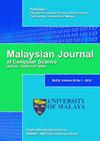基于层次分类和自动方面分类的在线用户评论情感归因分析
IF 1.2
4区 计算机科学
Q4 COMPUTER SCIENCE, ARTIFICIAL INTELLIGENCE
引用次数: 3
摘要
由于新冠肺炎大流行,大多数实体商业交易都推送到了网上。在线评论成为情绪分析的极好来源,可以确定客户对企业的情绪。这种洞察力对企业来说是宝贵的资产,尤其是对旅游业来说,可以用于商业智能和制定新的营销策略。然而,具有平面分类和手动方面分类技术的传统情绪分析对非固执己见的评论和过时的预定义方面类别提出了挑战,这限制了企业过滤相关固执己见评论,并从评论本身学习新的方面来进行基于方面的情绪分析。因此,本文提出了分层分类和自动方面分类的情绪归因分析,以提高勤奋营销的社会倾听能力,并推荐潜在的业务优化,使业务在疫情后从生存走向繁荣。使用混合方法提出了层次分类。而自动方面分类是通过语义相似性聚类构建的,并将增强的主题建模应用于有主见的评论。在航空公司和酒店这两个不同行业的两个真实世界数据集上的实验结果表明,与基线论文相比,采用分层分类的情绪分析优于分类精度,具有良好的F1分数。发现自动方面分类能够消除手动方面分类中未识别的方面的情绪。尽管基于方面的情感分析在平面分类和手动方面分类上的有效性是公认的,但在使用混合方法和自动方面分类的分层分类时,没有人评估其有效性。本文章由计算机程序翻译,如有差异,请以英文原文为准。
SENTIMENT ATTRIBUTION ANALYSIS WITH HIERARCHICAL CLASSIFICATION AND AUTOMATIC ASPECT CATEGORIZATION ON ONLINE USER REVIEWS
Due to COVID-19 pandemic, most physical business transactions were pushed online. Online reviews became an excellent source for sentiment analysis to determine a customer's sentiment about a business. This insight is valuable asset for businesses, especially for tourism sector, to be harnessed for business intelligence and craft new marketing strategies. However, traditional sentiment analysis with flat classification and manual aspect categorization technique imposes challenges with non-opinionated reviews and outdated pre-defined aspect categories which limits businesses to filter relevant opinionated reviews and learn new aspects from reviews itself for aspect-based sentiment analysis. Therefore, this paper proposes sentiment attribution analysis with hierarchical classification and automatic aspect categorization to improve the social listening for diligent marketing and recommend potential business optimization to revive the business from surviving to thriving after this pandemic. Hierarchical classification is proposed using hybrid approach. While automatic aspect categorization is constructed with semantic similarity clustering and applied enhanced topic modelling on opinionated reviews. Experimental results on two real-world datasets from two different industries, Airline and Hotel, shows that the sentiment analysis with hierarchical classification outperforms the classification accuracy with a good F1-score compared to baseline papers. Automatic aspect categorization was found to be able to unhide the sentiment of the aspects which was not recognized in manual aspect categorization. Although it is accepted that the effectiveness of aspect-based sentiment analysis on flat classification and manual aspect categorization, none have assessed the effectiveness while using hierarchical classification with a hybrid approach and automatic aspect categorization.
求助全文
通过发布文献求助,成功后即可免费获取论文全文。
去求助
来源期刊

Malaysian Journal of Computer Science
COMPUTER SCIENCE, ARTIFICIAL INTELLIGENCE-COMPUTER SCIENCE, THEORY & METHODS
CiteScore
2.20
自引率
33.30%
发文量
35
审稿时长
7.5 months
期刊介绍:
The Malaysian Journal of Computer Science (ISSN 0127-9084) is published four times a year in January, April, July and October by the Faculty of Computer Science and Information Technology, University of Malaya, since 1985. Over the years, the journal has gained popularity and the number of paper submissions has increased steadily. The rigorous reviews from the referees have helped in ensuring that the high standard of the journal is maintained. The objectives are to promote exchange of information and knowledge in research work, new inventions/developments of Computer Science and on the use of Information Technology towards the structuring of an information-rich society and to assist the academic staff from local and foreign universities, business and industrial sectors, government departments and academic institutions on publishing research results and studies in Computer Science and Information Technology through a scholarly publication. The journal is being indexed and abstracted by Clarivate Analytics'' Web of Science and Elsevier''s Scopus
 求助内容:
求助内容: 应助结果提醒方式:
应助结果提醒方式:


